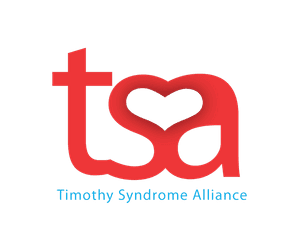The ‘Diagnostic Odyssey’ is the lengthy and frustrating journey from first noticing that something isn't right and going to the doctor to actually receiving a diagnosis. It's a process that can take many years, with seemingly endless tests along the way.
A rare disease is one that affects fewer than 1 in 2,000 people (Source: European Commission. 2020). Approximately 72% of rare conditions have a genetic origin (Source: European Journal of Human Genetics).
Despite the hope offered by genetic testing, it takes an average of about 5 years from the onset of symptoms to receive an accurate diagnosis (Rare Disease UK. 2019). The long journey to diagnosis is often longer in low- and middle-income countries. Some individuals face the possibility of never receiving a diagnosis.
This extended timeframe can have severe consequences, as over 75% of rare diseases affect children, and approximately 30% of individuals with rare diseases die before reaching their 5th birthday (England Rare Diseases Action Plan 2023).
The impact of delayed diagnosis for rare diseases is significant. People living with rare diseases, and their families, often face a lifetime of complex care leading to a profound impact on their education, financial stability, physical mobility and mental health. (Source: England Rare Diseases Action Plan. 2023). Following diagnosis individuals often have to become their own care coordinators because of the uncertainties of those involved in their multi-disciplinary care (Source: Rare Disease UK. 2019).
Our film highlights the number of healthcare professionals seen by just four of our rare disease families. Our disease is genetic in origin and caused by a change in a gene called CACNA1C. It’s ultra-rare. We have connected with just over 160 individuals known to have this gene change globally. We are one of the 95% of rare diseases that have no treatment (Source: National Organization of Rare Diseases).
It doesn't need to be like this. Rare Diseases are collectively common. It is estimated that 1 in 17 will be affected by a rare disease in their lifetime (Source: Rare Diseases UK). This amounts to 3.5 million people in the UK and 30 million people across Europe (Source: European Commission. 2020).
One of the greatest challenges for the rare disease community is that medical professionals lack awareness of rare conditions (Source: European Commission. 2020).
“It is outright impossible for all doctors to have knowledge of more than 7,000 recognised rare diseases. However, it is feasible for all medical professionals to learn when to suspect a rare disease, to appreciate that rare diseases are collectively common and to recognise the exceptional challenges faced by those affected.” (Source: Medics 4 Rare Diseases)
The diagnostic odyssey for rare diseases is often caused by limited awareness, lack of expertise, and the complexity of symptoms, leading to delayed or missed diagnoses. By achieving timely and accurate diagnoses, individuals can gain access to appropriate treatments, support, and resources, ultimately improving their quality of life and prognosis.
The last day of February marks Rare Disease Day, a global initiative to raise awareness and support for individuals living with rare diseases, which is particularly significant given the diagnostic challenges they face. With over 300 million people worldwide affected by rare diseases, the day serves as a crucial platform to advocate for equity in social opportunity, healthcare, and access to diagnosis and therapies.
Please visit https://www.rarediseaseday.org to learn how you can help make our collective voice louder in advocating for change.
Dare to think rare
TSA is a parent-led registered charity for an ultra rare genetic disease which presents as a spectrum of conditions characterised by a range of cardiovascular and/or neurologic symptoms.
Our mission focuses on improving diagnosis rates, treatment, and support for individuals with CACNA1C-related disorders which includes Timothy Syndrome and LongQT8, while also aiding their families and caregivers. We focus on five core areas: raising awareness and understanding, improving diagnosis and care, supporting our community, providing information and advice, and driving research and clinical development. By prioritizing these vital areas, we aim to make a lasting impact.

We align with the following UN Sustainable Development Goals: